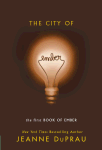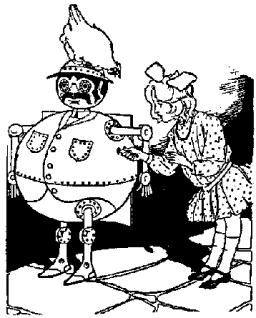 The good news is that Walden Media and 20th Century Fox have made a deal to adapt Susan Cooper’s The Dark Is Rising into a movie, scheduled for release in a year.
The good news is that Walden Media and 20th Century Fox have made a deal to adapt Susan Cooper’s The Dark Is Rising into a movie, scheduled for release in a year.
The disquieting news is that the director is David L. Cunningham, director of the recent TV miniseries The Path to 9/11, widely criticized for being historically inaccurate, politically slanted, and rather unexciting.
This PDF download quotes Cunningham saying in 1991, at the age of twenty, that he felt a “call to be a missionary to Hollywood. It was a plan to create an independent film company whereby he could both influence the Hollywood film industry and produce major motion pictures which would carry a Biblical, values-based message.” In 2004, Cunningham and fellow alumni of the University of the Nations (an unaccredited institution founded by his father) started a non-profit organization called The Film Institute. It describes itself as dedicated to a Godly transformation and revolution TO and THROUGH the Film and Television industry. TO it, by serving, living humbly with integrity in what is often a world driven by selfish ambition, power and money – transforming lives from within, and THROUGH it, by creating relevant and evocative content which promotes Godly principles of Truth married with Love.
All well and good, but Cunningham’s highest-profile project showed little concern for “Truth,” at least the historically accurate kind. There were so many distortions in The Path to 9/11 that ABC recut the footage after sending out review copies, added disclaimers, and has now wiped mentions of the movie from abc.com and the pathto911.abc.com subdomain.
Most of the miniseries’s distortions seem to stem from Cyrus Nowrasteh’s screenplay, but at least one was the director’s choice. In one scene the actor playing National Security Advisor Sandy Berger hung up his phone in the middle of a (fictional) CIA operation. The actor improvised that business. Rather than stick to documented “Truth,” Cunningham included that scene in his final cut, which was sent to TV critics and right-wing commentators. After nationwide protests and threats of legal action, ABC edited out the scene.
The first drama from Cunningham’s production company, Pray for Rain Pictures, was the WW2 prison camp drama To End All Wars. Its source in the memoir of a Christian clergyman was no doubt part of its appeal to Cunningham. DVDreport.com reviewer Joel Pearce wrote:Unfortunately, the lack of subtlety with which these [allegorical] scenes are handled threatens to destroy everything good about To End All Wars. The first few times there are scenes of personal sacrifice, we understand where they are heading. By the fifth time, we are starting to get tired of being hit with it over and over. By the seventh or eighth time, I found myself stunned by the overtness of it all. It also strains believability, which is so important for historical films.
Why does this matter when it comes to The Dark Is Rising? A fantasy novel has no historical record to adhere to, after all. But it’s still quite possible for a director to distort source material by imposing his own world-view on it. I wonder how Cunningham will handle this scene from the book, immediately after the Old Ones have driven off an attack of the Dark: The rector stood up, his smooth, plump face creased in an effort to make sense of the incomprehensible. “Certainly it has gone,” he said, looking slowly round the church. “Whatever--influence it was. The Lord be praised.” He too looked at the Signs on Will’s belt, and he glanced up again, smiling suddenly, an almost childish smile of relief and delight. “That did the work, didn’t it? The cross. Not of the church, but a Christian cross nonetheless.”
“Very old, them crosses are, rector,” said Old George unexpectedly, firm and clear. “Made a long time before Christianity. Long before Christ.”
The rector beamed at him. “But not before God,” he said simply.
The Old Ones looked at him. There was no answer that would not have offended him, so no one tried to give one. Except, after a moment, Will.
“There’s not really any before and after, is there?” he said. “Everything that matters is outside Time. And comes from there and can go there.”
Mr Beaumont turned to him in surprise. “You mean infinity, of course, my boy.”
“Not altogether,” said the Old One that was Will. “I mean the part of all of us, and of all the things we think and believe, that has nothing to do with yesterday or tomorrow because it belongs at a different kind of level. Yesterday is still there, on that level. Tomorrow is there too. You can visit either of them. And all Gods are there, and all the things they have ever stood for. And,” he added sadly, “the opposite, too.”
“Will,” said the rector, staring at him, “I am not sure whether you should be exorcized or ordained. You and I must have some long talks, very soon.”
Cooper depicts the rector, a well-meaning voice of Christianity, as completely out of his depth in her novel’s war between Light and Dark. He strains “to make sense of the incomprehensible,” and shows “an almost childish smile of relief and delight” when he spots something that lets him explain events through his pre-existing beliefs. Some Christians have been troubled by this aspect of Cooper's novel, and its general use of motifs from pre-Christian Britain.
How will Cunningham, with his professed mission to spread "a Biblical, values-based message" and his track record for straining both accuracy and believability in dramatic films, handle this novel’s challenges to his own beliefs?
[ADDENDA: Further news on this movie:
 So what's Diana Wynne Jones's latest fantasy doing on the right, the spot I usually reserve for Oz-related images? And why is that the British cover of the book instead of the American?
So what's Diana Wynne Jones's latest fantasy doing on the right, the spot I usually reserve for Oz-related images? And why is that the British cover of the book instead of the American?


















